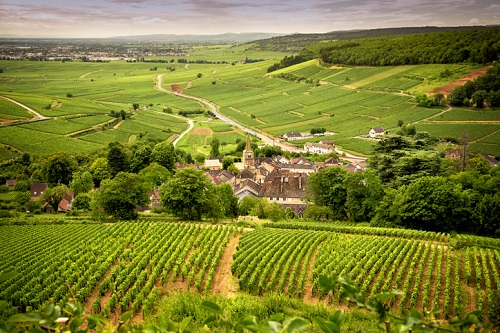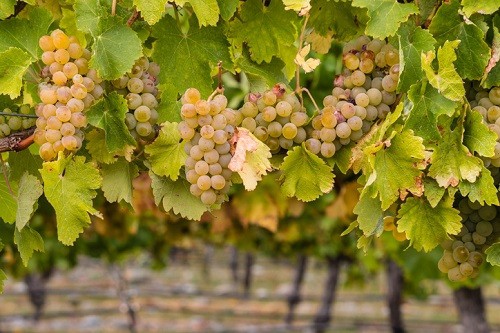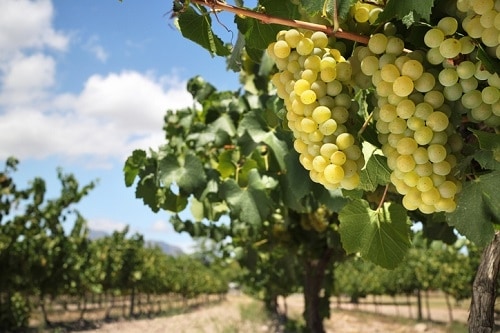Chardonnay Wine Taste, Pairings & Wines to Try
Last Updated on September 27, 2023.
Editor’s Note: Winetraveler is a reader-supported publication and this article may contain affiliate links. We review and recommend all products independently. When you buy wine through our site, we may earn a small commission at no cost to you.
Chardonnay is a white wine grape variety native to Burgundy, France. It’s currently the most popular white wine grape variety in the world and can have a diverse flavor profile depending on where it’s grown and if oak is used during the aging process.
What Does Chardonnay Taste Like?
Chardonnay can be lean and acidic or rich and buttery depending on a variety of terroir and vinification conditions. In general, it can be leaner and brighter when it’s from cooler regions like Burgundy and richer and more fruit-forward when it’s from hotter regions like Napa.
Classic notes that can be found in Chardonnays are apple, pear, lemon, apricot, ginger, melon, papaya, and white floral notes. When it’s aged in oak or undergoes malolactic fermentation, there can also be buttery-toasty notes, which can sometimes be confused with flavors inherently found in the grape.
Unfortunately, the heavy-handed use of oak led some wine drinkers to abandon Chardonnay altogether, which is a shame since it shows beautifully when the oak notes are well integrated. Fermenting and aging in steel tanks can elicit the purer notes inherent to Chardonnay without intrusive oak notes.

Chardonnay Food Pairings
When it comes to pairings, think about the weight of the dish and the weight of the wine. Those brighter, more acidic Chardonnays work beautifully with seafood, including firm white fish, salmon, lobster, mussels, and shrimp. Avoid overly spicy sauces that overpower the fruit of the wine.
Richer Chardonnays also work well with poultry and pork, particularly those with creamy or buttery sauces. Chardonnay also loves pasta dishes like alfredo or primavera. Due to the apple notes of richer Chardonnays, it pairs naturally with autumnal produce like roasted pumpkin and Brussel sprouts.
Climate and Terroir for Chardonnay
Chardonnay hails from the Burgundy region of France, where it is arguably still at its finest. The limestone-rich soil with fossil deposits lends the distinctive minerality that can be found in white Burgundies, particularly Chablis. Chardonnay is one of the grapes that make up sparkling wines in neighboring Champagne and can be found in small plantings in other regions of France like the Loire Valley. It also can work well in Italy because it can thrive in a variety of climates.
Outside of Europe, Chardonnay has flourished in California, particularly in Sonoma and Santa Barbara County. It also has worked well in New York State, both on Long Island and along the Niagara Escarpment, and throughout Oregon and Washington. Chile and Argentina have also produced some lovely examples on Chardonnay, though they do tend to be on the more buttery side.
How is Chardonnay Aged?
Because of its naturally high acidity, Chardonnay is very age-worthy, particularly when it’s from cooler regions that help maintain the higher acidity levels. As it ages, that zippy acidity breaks down and evolves into softer, more nuanced wines. Though commonly aged in oak, it’s not necessary to do so because steel tanks or stone cisterns allow the wine to age without imparting an oak influence. When aged in oak, newer oak will have the strongest influence while older barrels will soften the wine and impart a more subtle oak flavor (if detectable at all).
The best Chardonnays can age for decades, as can the best Champagnes. Most inexpensive Chardonnays are meant to be enjoyed more immediately, though even they can age a bit if the acidity levels are high enough.
Recommended Chardonnay Wines to Buy Online from Around the World
- Liquid Farm ‘Golden Slope’ Chardonnay, Sta. Rita Hills, Santa Barbara County, California
- Hanzell Chardonnay, Sonoma Valley, California
- Jean-Paul Brun Domaine des Terres Dorees, Beaujolais Blanc, Beaujolais, France
- Domaine Christian Moreau, Chablis, Burgundy, France
- Pio Cesare, ‘L’Altro’ Chardonnay, Piedmont, Italy
- El Enemigo Chardonnay, Mendoza, Argentina
Frequently Asked Questions about Chardonnay Wine
Written by Jamie Metzgar
Jamie Elizabeth Metzgar began her career in wine by pouring in a tasting room on the East End of Long Island, NY. After moving to New York City, she landed a position at Chambers Street Wines where she was encouraged to pursue wine education at the Wine & Spirits Education Trust (WSET). She earned Level III certification there and has since earned California Wine Appellation Specialist and Certified Specialist of Wine certifications as well. After way too many moves, she has recently landed in Northern California where she is compiling an unofficial roster of dog-friendly tasting rooms.
Chardonnay Taste Profile & Food Pairings
Fruit
Varied (Tree Fruit, Citrus Fruit, Tropical Fruit — depending on climate) Dragonfruit, Pear, Green Apple, Lemon-Peel, Orange, Melon, Pineapple, Banana, Grapefruit
Earth & Mineral Notes
Limestone, Chalk
Additional Complexities
Spring Flowers, Hazelnut, Honey, Tea leaf, Vanilla, Thyme, Almond
- Oak Aged Chardonnay: Butter, Vanilla, Spice, Smoke, Rounded Fruit, Toast, Creme Brulee
Structure & Body of Chardonnay Wine
Body Varied (Medium-Full)
Sugar Dry, Off-Dry
Tannins Light
Acid Varied (Medium-Low to High)
Alcohol Medium-High (12.5%-14.5% ABV)
Finish Medium-Long, Fruit-Forward, Refreshing Acid
Fish
Chardonnay wines typically pair very well with most white fish dishes.
Pasta
Depending on whether its been aged in oak or not, Chardonnay works well with a wide range of pastas -- especially penne a la vodka or pastas with alfredo or other white cream based sauces. Butternut squash risotto is always a hit.
Poultry
Chardonnay works incredibly well with most white meat dishes cooked with lemon or honey -- especially chicken.

